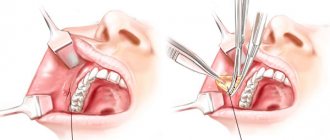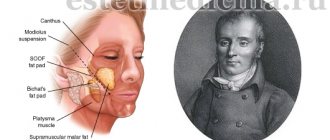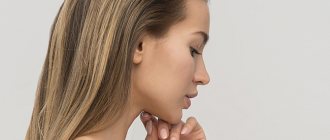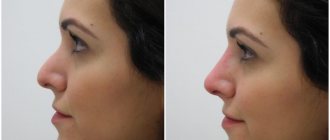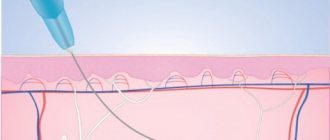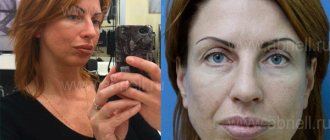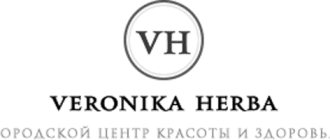The issue of losing weight is considered a “sick” issue for many. The most difficult thing is not to lose a lot of extra pounds, but to reduce the volume of certain areas. The cheeks are just such a problem area. The difficulty of solving a problem often lies in the anatomical features of the body. There are special formations here: Bisha's lumps. They can only be removed surgically. Whether this should be done, everyone decides for themselves. At a young age, this is a controversial issue, but the external picture gets worse over the years.
What it is
Volume cheeks are not only fat tissue evenly distributed under the skin. Under the cheekbone, closer to the center of the cheek, there is a special formation called Bisha's lump. This is a collection of fat cells collected in a dense capsule. The size of the lumps may vary from person to person. For some, the formation is the size of a quail egg, for others it is similar in size to a chicken egg. This is an individual feature.
The more lumps in the thickness of the cheeks, the fuller the face looks. With age, the fat packet decreases, exacerbating the problem of jowl formation.
Bisha's lumps were named after the researcher, a French specialist in physiology and anatomy. Scientists can only speculate why fat formation is needed on a person’s face. The lumps act as a shock absorber. Fat bags protect muscles and nerves from damage and facilitate the chewing process. The greatest need for lumps is observed in infants. With age, the volume of fat packets does not increase.
Bisha's lumps - what are they and where are the fat deposits in the cheeks?
So what are Bisha's lumps and where are these hated fatty deposits in the cheeks? As you can easily guess from the question, Bisha's lumps are deposits of fatty tissue inside the cheeks. Despite their apparent uselessness, these formations play a very important role in infancy. Thanks to Bisha's lumps, the child can suck and then learn to chew. Lumps of fat act as shock absorbers that reduce pressure on the jaw muscles as the child develops. With age, the need for large fat deposits inside tickles, and Bish's lumps gradually decrease. By the way, these fatty deposits got their name in honor of the French physiologist Marie Bichat, who was the first to discover lumps and make an assumption about their functions.
Where are the fat (Bish's lumps) in the cheeks?
Where exactly are fat deposits in the cheeks located? Bisha's lumps consist of three parts - anterior, middle and posterior. Each of the parts has its own localization: the anterior lobe surrounds the duct of the parotid salivary gland, and the posterior part stretches from the infraorbital groove to the upper edge of the lower jaw. The middle lobe is located between them and is what causes chubby cheeks.
Indications for removal
There is no physiological need to remove Bisha's lumps. This is purely an aesthetic necessity. Manipulation is popular among celebrities. Stars strive to achieve bright facial relief and expressive contours. Doctors advise considering the possibility of surgical removal of fat pads when the patient:
- excess fatty tissue in the cheek area;
- round face shape due to structural features;
- age-related weakening of tissues and muscles, resulting in ptosis;
- bright nasolabial folds and jowls are formed.
The need for surgery will be determined by the surgeon. The doctor compares the external picture with the possibility of obtaining a favorable result.
You can start thinking about surgery at the age of 20–25. Most often, intervention is performed by women aged 30–35, when age-related changes are visible, but minor changes can still save the situation. In men, the procedure is not widely accepted. Removing Bish's lumps is not recommended after 40 years. Negative changes in appearance are possible, aggravating the problems of aging.
Negative consequences in old age after surgery
The procedure for removing fat in the cheek area is recommended no earlier than 30 years of age, but before you go to a plastic surgeon, you need to see what Bisha's lumps look like in old age.
10 – 15 years after the operation, the soft tissues of the face may sag, wrinkles will appear, and the skin will lose its natural shine and appearance. But many experts assure that with age, in every woman, drooping of the oval face is a physiological norm of aging of the body, and whether the absence of Bush lumps is the reason for this is difficult to answer.
Increased sagging facial skin is another problem faced by mature women. However, the cause of decreased skin elasticity is not always the lack of fat on the cheeks. Rather, this is due to reduced production of collagen and elastin, which is the norm in old age.
Operation efficiency
Removing Bisha's lumps promotes external rejuvenation and harmonization of the face. Here's why the procedure is performed:
- the volume of the cheeks is noticeably reduced;
- cheekbones are more clearly defined;
- the severity of nasolabial folds and jowls decreases;
- the shape of the face changes.
Important point! To achieve a pronounced lifting effect, removal of Bisha's lumps is performed in combination with lifting the middle and lower third of the face. Plastic surgery is performed when the effects of old age are pronounced.
Methods for removing fatty lumps at home
Exercises
Various techniques are known to remove fatty lumps without surgery.
For home use, you can use a set of exercises:
- Before starting a workout, you should warm up and prepare your muscles for work. The easiest way to do this is by patting, then pinching in a circular motion over the entire face.
- It is necessary to puff out your cheeks strongly, then release the air slowly, forming your lips into a pipe shape. Perform 30 repetitions.
- Raise your cheeks in the same way as before smiling, only with the help of your neck muscles. You cannot use any other muscles. Tighten your muscles for 3 minutes.
- Purse your lips in the shape of a bow and perform circular movements with your lips for 2 minutes.
- Try to move the distant muscles through closed jaws. With the right technique, the sensation is reminiscent of chewing meat. Gradually increase the training time to 5 minutes.
- Slow smile technique with the mouth closed, only the zygomatic muscles should act.
- The mouth opens wide and draws in as much air as possible. You need to stick out your tongue and exhale with a loud sound. The number of repetitions of the exercise is 10 times.
- With a pencil or any other object held between your lips, draw letters and numbers in the air.
- About 3 min. imitate rinsing your mouth by drawing air into it.
- Place your chin on your hands with your elbows on the table. Straining your facial muscles, you need to open your mouth.
After training, you should perform stretching and muscle relaxation exercises. Gently tilt your head from side to side to stretch the muscles of your neck and face to the maximum possible amplitude.
The first noticeable results of using facial fitness will be noticeable after a month of regular exercise.
But don't expect big changes. Without an integrated approach combined with nutrition, massages and hardware techniques, it is difficult to achieve obvious success.
Oil and masks
A good effect can be achieved by performing a facial massage using various oils. Oils have a wide list of beneficial properties, thanks to which the skin becomes elastic, toned and fresh. Massage improves blood circulation in problem areas, fills cells with oxygen and triggers accelerated metabolism.
Using available products at home is an economical and affordable way of care.
Sunflower or olive oil are better suited for normal skin, St. John's wort and jojoba oil are better for oily skin, almond oil has a pronounced tightening effect.
Examples of recipes for preparing oils:
- Add a little honey to the almond oil and massage your face in a circular motion for about 5 minutes. This composition ensures smoothing of unevenness and fine wrinkles.
- Add lemon, bergamot and cypress oil to sunflower oil.
- Rose, jasmine and cedar oils are mixed with a base of almond oil.
The prepared mixtures should be stored in the refrigerator , but before use it is better to take them out and leave them to stand for some time to reach room temperature. It is recommended to massage with oil in courses, if necessary, repeat 1-2 times a week to maintain skin tone. In addition to oils, the use of masks in various variations is common.
Several recipes for masks used in combination with other techniques to reduce the volume of curvy faces:
- 1 tbsp. yeast dissolves in a small amount of milk. The resulting solution must be evenly distributed over the surface of the face in several layers. You need to wait until one layer dries, then start applying the next one. The mask is suitable for daily use.
- Mix a couple of spoons of oatmeal with natural yogurt and leave for 20 minutes until the flakes become voluminous enough. Apply the resulting mixture in a thick layer over the entire face, rinse thoroughly after 30 minutes. You can repeat the procedure every other day.
- Stir blue clay with water until you obtain a consistency similar to sour cream. Apply to face and let dry, which will take about 15 minutes. It is recommended to use twice a week.
- Using suppositories to treat hemorrhoids as an emergency way to combat swelling on the face. This drug is known for its quick-acting calming properties. To prepare the mask, you need to melt a candle and apply it to the skin of your cheeks at night. This method is not intended for regular use. Only one-time application is allowed for special occasions.
Don't miss the most popular article in the section: How and why ribs are removed - effectiveness, photos before and after surgery.
Is preparation necessary?
The operation to remove Bisha's lumps is considered a simple intervention. At the preliminary consultation, the doctor collects anamnesis and confirms the possibility of performing the manipulation. Long, grueling preparation for surgery is usually not required.
In 2–3 weeks, be sure to exclude:
- bad habits (alcohol, smoking);
- medications (especially anticoagulants, hormones);
- various procedures (Botox, lipolytics).
You must come to the operation in good health. Be sure to first sanitize the oral cavity and rule out any respiratory diseases. It is important to exclude the activation of the herpes virus before manipulation.
What are Bisha's lumps
Between the buccal muscle and the superficial muscles of the face (masseter, zygomaticus major and minor) there are fatty formations called lumps, or Bichat's lumps, after the name of the French anatomist and physiologist Marie François Xavier Bichat. If you cut them out, your cheekbones will become more visible—at least, that’s what is commonly believed. In Russia, removal operations were performed back in the early 1990s, when heroin chic and models like Kate Moss were in fashion. Then the operation became less in demand, and about five to seven years ago the trend for sculpting and a chiseled face with sunken cheeks and sharp cheekbones returned again.
Why are Bish's lumps needed? “They perform a vital function only in childhood, when the child sucks milk—the lumps increase back pressure in the oral cavity,” says Galia Mollaeva (Saratovtseva), Ph.D., plastic surgeon. “In adults, it has a protective function in relation to facial muscles,” adds Naida Aliyeva, chief physician of the Verna clinic. In other words, if you play volleyball and get hit in the face with the ball, then Bish's lumps will work as an airbag.
View on Instagram
Operation stages
The process of removing Bisha's lumps is considered minimally invasive. The intervention can be performed under local anesthesia. The type of anesthesia is determined individually. Many patients do not dare to undergo facial manipulation without general anesthesia. Although the intervention is similar to the process of tooth extraction.
The surgeon performs disinfection on the inner surface of the cheek and makes a miniature incision in the mucous membrane in the area where the lumps are located (1–2 cm). The fat globule is removed completely or in parts. Partial resection of Bisha's lumps is possible. The procedure is often performed with a laser. The integrity of the cheek is restored with a cosmetic suture. The incision site is disinfected, and the seam is closed with a special gasket. The skin is secured on the outside with an elastic band. When performing the intervention in combination with other manipulations, access to Bisha's lumps is opened through a general incision on the outside of the cheek.
The operation lasts 20–30 minutes. The doctor monitors the patient's condition and waits for the anesthesia to wear off. The absence of undesirable consequences allows the client to be sent home for rehabilitation. The doctor first talks about the nuances of recovery and schedules a follow-up visit.
Surgery to remove Bisha's lumps
Preparing for surgery
At the stage when a clinic and a doctor have already been selected, it is necessary to undergo preparatory preoperative measures:
- Initial consultation - consists of a mandatory survey of the patient, during which details of the patient’s health status, the presence of allergic reactions, and various contraindications are clarified. Also, the doctor must give comprehensive answers to all points of interest to the patient about the future operation, regarding the recovery period, and discuss possible consequences.
- The procedure of visual examination of the patient and palpation of the operated area, necessary for the surgeon to plan the correction.
- Modeling the result of the intervention - using a computer program, the client can visually assess the future appearance of the face after correction.
- Medical examination and testing. Before surgical interventions, a blood test is always taken for HIV, hepatitis, and syphilis. Other tests include urine tests, ECG and fluorography.
- Compliance with the doctor’s recommendations, such as a ban on drinking alcohol, smoking, and certain medications.
- The operation takes place on an empty stomach, the skin must be cleansed of all kinds of cosmetics.
Stages of surgery on the inside of the cheeks
One of the methods of performing the operation is removal from the inner surface of the cheeks, which is considered the safest due to the close proximity of the lumps to the inside of the cheek wall.
Correction stages:
- General or local anesthesia, depending on the wishes of the patient and the doctor’s recommendations.
- Disinfectant treatment with a special solution.
- The incision site is palpated and determined.
- An incision is made within the mucous tissue within 2 cm.
- The muscles move apart, lumps are separated from their surface.
- The lumps are cut off and taken out.
- Symmetry is checked by comparing the sizes of the lumps.
- Sutures are placed, the scars from which disappear without a trace over time.
The total procedure time is no more than 30 minutes. Approximate cost: 25,000-50,000 rubles . Such a wide range of prices is due to the popularity of the clinic and the reputation of the doctor.
Bisha's lumps (photos before and after surgery, what lumps look like):
Operation through incisions on the face
This technique is used in addition to any other surgical correction that involves cutting the skin on the face. A more complex and traumatic method requires special surgical skill, since nerve endings and salivary glands are concentrated at the site of the incisions.
Sequence of actions during the operation:
- Choice of anesthesia.
- The surgical site is delimited by surgical material.
- Treating the operating area with antiseptic agents.
- An incision is made in the cheek through which fatty lumps are removed and cut off.
- In case of damage, small vessels are cauterized.
- The incisions are sewn together with a special cosmetic suture.
- At first, the mark from the suture will be noticeable, but upon completion of rehabilitation it will become invisible.
Estimated price: 30,000-60,000 rubles.
Rehabilitation and recovery
After completion of the operation and complete recovery from anesthesia, the patient can leave the clinic. The duration of rehabilitation is approximately 2-3 weeks.
Basic principles of the rehabilitation period:
- All thermal procedures are prohibited (visiting saunas, steam baths and other similar places).
- Limiting physical activity.
- Facial expressions of emotions should be limited.
- To get rid of swelling faster, it is recommended to sleep on your back with a high pillow.
- Adhere to a specially designed diet that can minimize stress on the facial muscles. During the first days, food is consumed only in liquid form. Then mashed potatoes and ground products are gradually introduced. You should not eat hot or cold food. Be sure to rinse your mouth with antiseptic solutions after eating.
- Brushing your teeth should be done in a gentle manner.
- Alcohol and smoking are strictly prohibited for the entire recovery period.
- Follow all doctor's orders and take antibiotics if necessary.
Consequences and possible complications after surgery
Negative consequences are rare.
Sometimes a surgeon’s mistake or failure to follow the rules for preparing for surgery can lead to the following consequences:
- Allergic manifestations in the form of a rash, breathing problems or heart function. Also common signs include pressure changes and bouts of vomiting.
- Due to the carelessness of the surgeon, the integrity of the tissues located next to the operated area (muscles, glands, nerves) may be compromised.
- Severe pain syndrome. On average, the pain subsides completely within one week.
Possible complications:
- The development of inflammation on the inside of the cheek as a result of injury to soft tissues by hard food or accidentally during sleep, can also be caused by the presence of foci of replenishment in the body before surgery.
- Facial asymmetry.
- Infection of incisions.
You should not save on your own health by choosing a dubious clinic or agreeing to the experiments of an inexperienced surgeon.
It is important to monitor weight gain, the return of extra pounds is fraught with the resumption of fatty deposits in the cheeks.
Using a laser
Removal of fatty tissue from the cheeks with a laser beam is called bishectomy. The main feature is minimal trauma, significantly reducing the risk of complications. Laser exposure promotes rapid tissue regeneration, reducing the recovery period. The coagulative properties of the rays ensure instant sealing of blood vessels.
Main stages:
- Once the local anesthetic begins to take effect, a laser incision is made on the inside of the buccal mucosa.
- The fat body is separated and removed.
- Self-absorbing sutures are applied.
- You need to wear an elastic bandage on your face for some time.
Average price of the procedure: 45,000 rubles.
Bisha's lumps (photos before and after removal using a laser beam):
Don’t miss the most popular article in the section: Vera Alentova after plastic surgery - the latest photos, what operations were performed, how the star has changed.
Photos before and after
Stars that removed lumps of bisha.
Rehabilitation
Considering that the manipulation is performed on the inner surface of the cheek, the appearance after the intervention changes insignificantly. Swelling may occur, which will make the cheeks appear larger. This is a temporary phenomenon. After 2-3 days, if you follow all the surgeon’s recommendations, the puffiness will disappear.
Serious restrictions are imposed on actions requiring the participation of the oral cavity. It is recommended to eat soft foods that are not capable of injuring the tissue in the suture area. Regular disinfectant rinsing and careful brushing of teeth are mandatory. It is important to monitor the thermal compliance of food. Consumption of excessively cold or hot food or drinks is prohibited.
The surgeon often prescribes antibiotics to prevent inflammation. After 5–10 days, the sutures are removed if non-absorbable threads were used. During the rehabilitation period, it is important to observe restrictions. It is forbidden:
- physically strain;
- visit the sauna, swimming pool, take a hot bath or shower;
- overload the facial muscles (limit facial expressions);
- sleep on your stomach or side;
- stay in public places for a long time, talk a lot, kiss.
The doctor removes or loosens most restrictions after 10–14 days. During this same period, it will be possible to evaluate the first achievements. The face takes on a new relief. The result of the operation is permanent. New Bish's lumps are not formed. Scars after surgery are not visible. It is difficult to say how long the aesthetic effect will last. Often old age quickly neutralizes the positive result, and other supporting changes are required.
Cost of the procedure
The price of the operation depends on the individual characteristics of the body, the anesthesia performed, and the qualifications of the doctor. The cost of intervention rarely exceeds 50 thousand rubles. The average price of manipulation ranges from 15–30 thousand rubles. Patients are not recommended to save money when turning to interns. Regardless of the low complexity of the intervention, incorrectly performed manipulation can lead to serious negative consequences. Therefore, you need to take a serious approach to choosing the place where to carry out the procedure.
Side effects
The main postoperative danger is the development of infection. This occurs as a result of violation of sterility during manipulation, during the rehabilitation period. The seams are located in a delicate area, damage is possible due to careless actions.
The threat of inflammation increases if there was a destructive process in the body before the operation.
Damage to the facial nerve is called a complication if the operation is performed incorrectly. The phenomenon is rare. More often, patients observe asymmetry due to uneven removal of lumps.
Sometimes plastic surgery clients receive results that do not meet their expectations. This significantly spoils the impression of the manipulation.
Opponents of removing Bisha's lumps argue that the intervention leads to sunken cheeks, and later age-related changes change the face to a greater extent. As a result of manipulation, excess skin may appear, which forms folds. It will not be possible to correct the result, obtaining the previous appearance, without radical interventions.
Contraindications
Removing Bisha's lumps is not recommended for patients who frequently change weight. There is a high probability that the manipulation will negatively affect your appearance. You will have to refuse deletion if:
- blood clotting disorders;
- exacerbation of chronic diseases;
- infectious, inflammatory processes in the body;
- oncology, autoimmune disorders;
- problems with blood vessels, blood, heart;
- recurrence of herpes;
- respiratory diseases;
- pregnancy, lactation.
It is advisable to postpone manipulation during menstruation or any destructive processes in the oral cavity.
Contraindications and possible complications
The procedure has some contraindications:
- metabolic disorders;
- anemia;
- chronic liver and kidney diseases;
- severe heart pathologies;
- epilepsy;
- low immunity;
- obesity;
- age up to 25 years.
It is not recommended to perform a bishectomy for persons who suffer from obesity or anorexia; it is also not performed for neuropsychiatric disorders. Considering a number of limitations to the procedure, the doctor at the initial consultation should exclude them from the patient’s medical history.
Advantages and disadvantages
Removal of Bisha's lumps, like any surgical procedure, has many contraindications. Complications are possible after the procedure.
The result of the operation does not always live up to expectations. Possible changes in the face in a negative direction, aggravation of age-related changes. The negative effect cannot be corrected. These are the disadvantages of removing Bisha's lumps.
The positive side of the intervention is the successful formation of facial relief. In most cases, aesthetic and age-related problems are solved.
The manipulation is considered simple, rehabilitation takes minimal time. The procedure is low cost and can be successfully combined with other surgical interventions on the face. These are the advantages of removing Bish's lumps.
Alternative methods
The only way to completely remove Bisha's pouches is through surgery. Alternative methods will only help reduce the size of fat deposits and reduce the volume of the cheeks. To do this, you can normalize your diet, do cardio training, visit the sauna, do massage, and lipolytic masks. In the salon, the cosmetologist will offer:
- lymphatic drainage massage techniques;
- thermal hardware exposure;
- mesotherapy with lipolytics.
It is recommended to master face building at home. Performing exercises can effectively reduce the volume of the cheeks. You will be able to master spoon massage or other effective techniques on your own. Contacting a cosmetologist will help you acquire an effective strategy for successfully achieving your goal. Although it will not be possible to completely remove the lump.
Opinion of cosmetologists
Doctors are afraid to send patients for surgery to remove Bish's lumps. Cosmetologists warn about possible consequences, which often develop after 40–50 years. Some doctors ignore these concerns and claim the effectiveness of the intervention.
The cosmetologist is confident in the effectiveness of the technique.
The cosmetologist does not see the point in manipulation.
The cosmetologist has a negative attitude towards the operation and suggests alternative methods.
Removal technique and consequences
The operation is performed under local anesthesia. In case of additional plastic surgery, general anesthesia is administered. The plastic surgeon will select the most effective method for excision of lumps that meets the patient’s requirements. The operation to remove Bisha's lumps is carried out using internal or external access. Sometimes the fatty tissue is not removed, but is shifted to the zygomatic area.
Internal access consists of making a small incision from the inside of the oral cavity, which eliminates the appearance of postoperative sutures and scars on the facial skin. The surgeon makes a 1.5-2 cm long incision through which the muscle is accessible. Then the capsule of the fatty lump is tightened, it is separated from the surrounding tissue and removed along with the membrane. After removal, stitches are placed on the incision area. The operation is performed on both cheeks.
External removal is performed less frequently and is mainly combined with other plastic surgery services. The course of the operation is practically no different from the previous one, but is considered less traumatic. During the operation, the doctor makes a small incision, after which the fatty tissue is removed along with the capsule, then absorbable sutures are applied.
The advantage of external access surgery is the minimal number of postoperative complications. If Bisha's lumps are removed, the consequences are extremely rare, especially when a laser procedure is used. During the procedure, the risk of infection of the surgical wound is significantly reduced, and the patient does not feel pain, and the precision of the laser beam makes it possible to remove deposits within a few minutes and reduce scar healing. After the operation, it is recommended to wear a special elastic bandage for several days.
Regardless of how the removal of Bisha's lumps is carried out, disadvantages and consequences are present with any technique. Therefore, it is very important to trust a highly qualified specialist.
No special preparation is required for this operation, but you must do the following:
- Visit a doctor;
- Get examined;
- Get tested.
During your consultation, you may be given a computer simulation of your appearance after surgery.
After the conclusion of the examination, the doctor performs the operation, choosing the most suitable option for the patient. The doctor can postpone the operation or refuse to perform it if there are contraindications or skin inflammation on the face. Basically, the procedure for removing adipose tissue takes no more than 30 minutes.
After the operation, the person is not in the hospital, but goes home, but periodically visits the doctor, who monitors the result of his work.
Patient reviews
Patients have different attitudes towards surgery. Some are satisfied with the results and advise not to be afraid and to use the services of surgeons. Many patients are afraid to perform manipulation, listening to the opinion of cosmetologists. Sometimes reviews of manipulation become negative after receiving unsuccessful results. Those who removed lumps say that after the procedure their cheeks sagged or sunken, and deep folds appeared.
The patient does not risk performing the operation and is looking for alternative methods.
The patient is satisfied with the result of the operation.
The patient is upset with the result of the operation.
